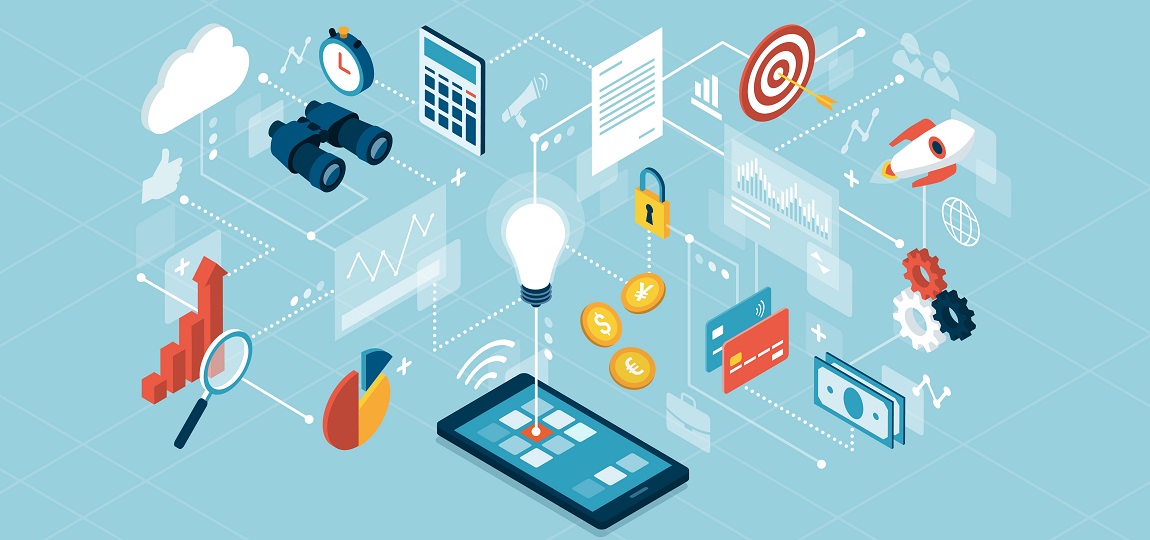Not that long ago, doing your banking or managing your finances with a mobile device seemed like science fiction. For many in 2020, it’s become the norm. You can use your smartphone to compare prices in-store, then use it as a payment device to make a purchase at the check-out counter. You can quickly check your account balance from your phone to make sure you won't overdraft, and you can even pay other bills while waiting in line.
Online banking and finance apps have become mainstream. Consumers used financial apps over one trillion times in 2019. Registration grew by 71%, and that’s before the COVID-19 pandemic forced many consumers to stay home or limit in-person shopping. In 2020, the use of technology for banking has grown significantly, with mobile banking up as much as 85%.
Technology is helping consumers manage their money and keep their financial information close at hand. Here are 7 ways you can utilize technology to help with your finances:
1. Automation. Payment automation goes well beyond direct deposit these days. At many companies, employees can automate a portion of their paycheck to different accounts to save for multiple goals such as 70% to checking and 30% to a savings account or put a certain amount in a college savings fund at a different financial institution. You can automate regular deposits to money market or investment accounts as well. You can also work with your employer to have a portion of each paycheck go directly into a 401k or IRA retirement account. This can save you from having to calculate how much of each paycheck to move, and prevents you from having to manually transfer the funds.
2. Online Banking. Mobile banking apps and online banking websites allow you do your banking online or on your phone. By going paperless with your bank statements, and having all of your banking transactions logged digitally, you can reduce paper clutter and will eliminate the need to manually reconcile your accounts. You also won't have to worry about misplacing paper records. Online banking gives you the ability to check your account balances within a few seconds. Some banking apps and websites can even send you real-time alerts if you’re low on funds, or when there is activity on your account. With most banking apps, checks can be deposited with a snap of a picture and debit or credit cards can be shut off instantly if they are lost or stolen.
3. Recurring Payments & Alerts. Through most online banking sites, you can set up automatic bill pay for recurring bills, such as your cell phone bills, utility bills, or car payments. Having monthly automatic payments going toward your credit cards can help to ensure you meet the minimum balance due each month so you don't rack up late fees. Free online bill pay has also taken away the added stress of mailing a check on time or worrying that it will get lost in the mail. Many banks have electronic transfers directly to companies to facilitate fast payment as soon as it is available – no more waiting for your check to arrive in the mailbox. If you feel more comfortable paying your bills manually, you can set up alerts to remind you when a bill is due.
4. Overdraft Protection. Although online banking allows you to quickly check your account balances, overdraft fees can still occur. If you have multiple accounts at a financial institution, such as a checking and savings account, you may be able to set up overdraft protection if your bank offers it. This means that if you write a check or use your debit card and do not have enough funds in your checking account to cover the puchase, it will automatically take the funds from your savings account. This can prevent you from being charged an overdraft or insufficient funds fee, or having the purchase declined.
5. Online Tools & Apps. Peer-to-peer, or P2P, payment solutions like PopMoney and Venmo have transformed money transferring. They allow you to pay friends in seconds, eliminating the headache of owing them or having to find an ATM to take out cash. Services such as PayPal and ApplePay can also help ensure the safety of your debit or credit card while online shopping at stores you may not be familiar with.
6. Budget for Your Goals. There are many financial apps that can help you plan and save to meet your financial goals. This could include budgeting for a goal, tracking monthly spending on things such as groceries or eating out, or just getting an overview of where your money is going. There are also apps that can provide coupons or discount codes to save you money, or help you compare prices across different stores or websites.
7. Business Management. For small business owners, there are many apps available to help you manage your organization. These include apps to help manage payroll, balance your finances, track expenses, manage cash flow, and more.
The Future of Tech in Finances
The COVID-19 pandemic has had a profound impact on the way we shop and handle our finances. Contactless payments have helped avoid handling money and more stores have adapted to offer online shopping capabilities. Although some may be hesitant to new technology, these contactless payment options like chip technology or Apple Pay are considered safer and may protect you against cyber-crime. It is expected this these payment methods will become the “new-normal”.
Digital platforms and apps have made it much easier to handle transactions without having to physically visit a bank. 86% of consumers report they interact with their bank digitally more often than in person. This trend is expected to stay. Financial institutions’ apps and online services will continue to evolve and offer additional services to better serve customers in the age of technology.
For more tips on money management or getting the most out of your bank, visit Bank5Connet.com/blog.
